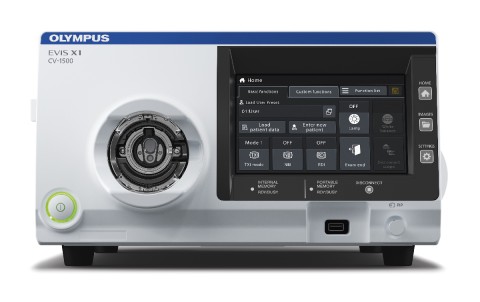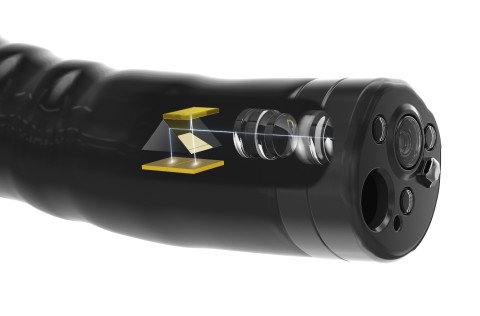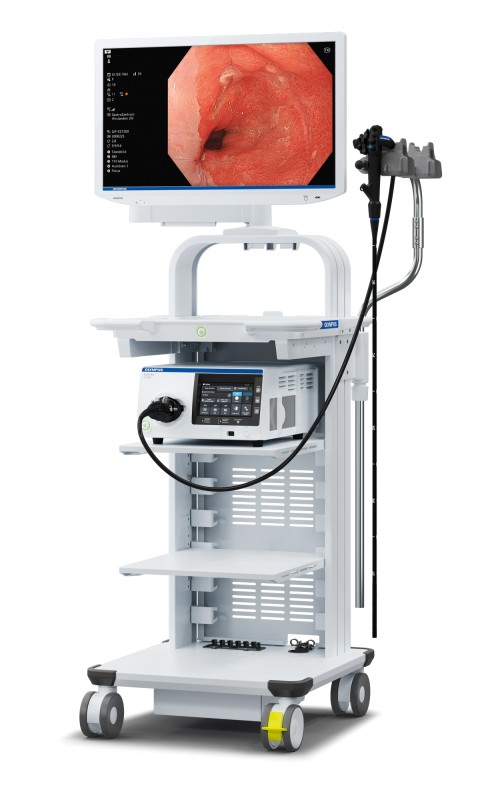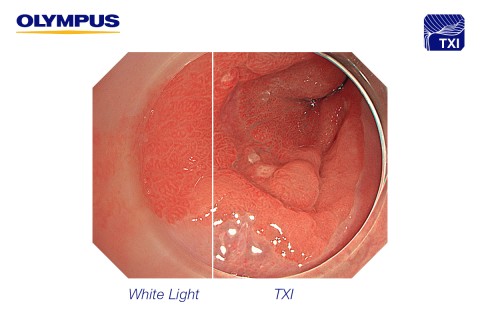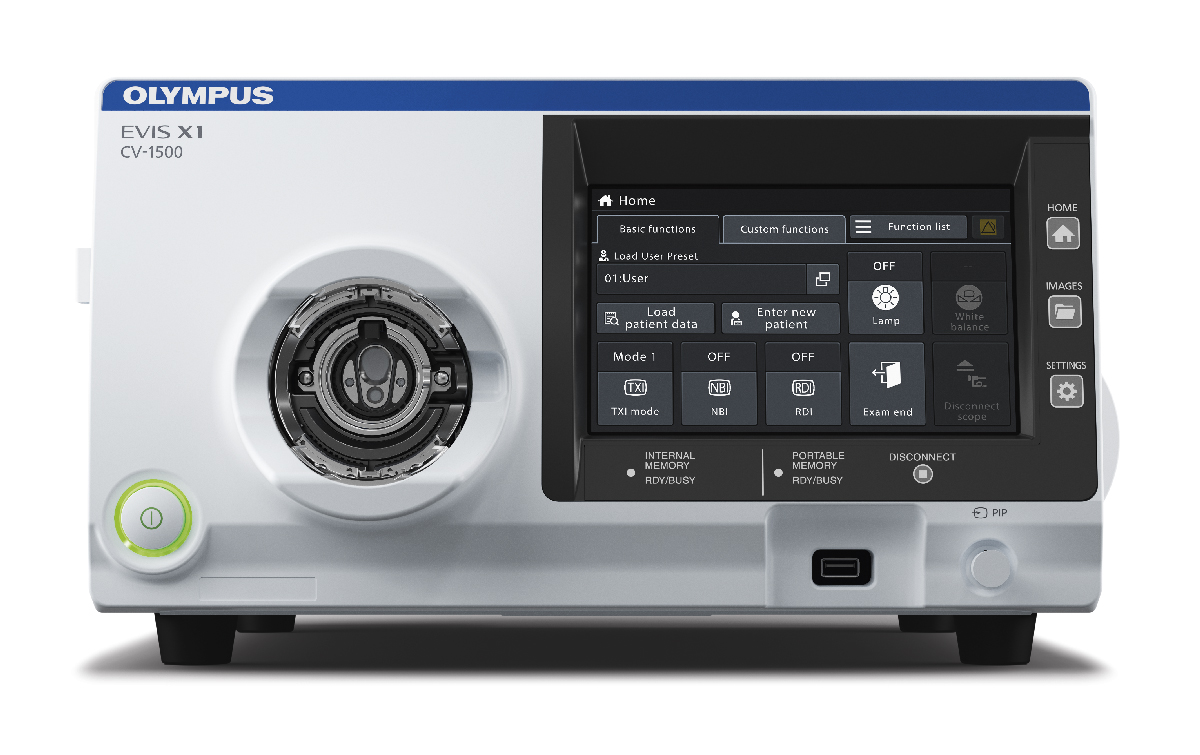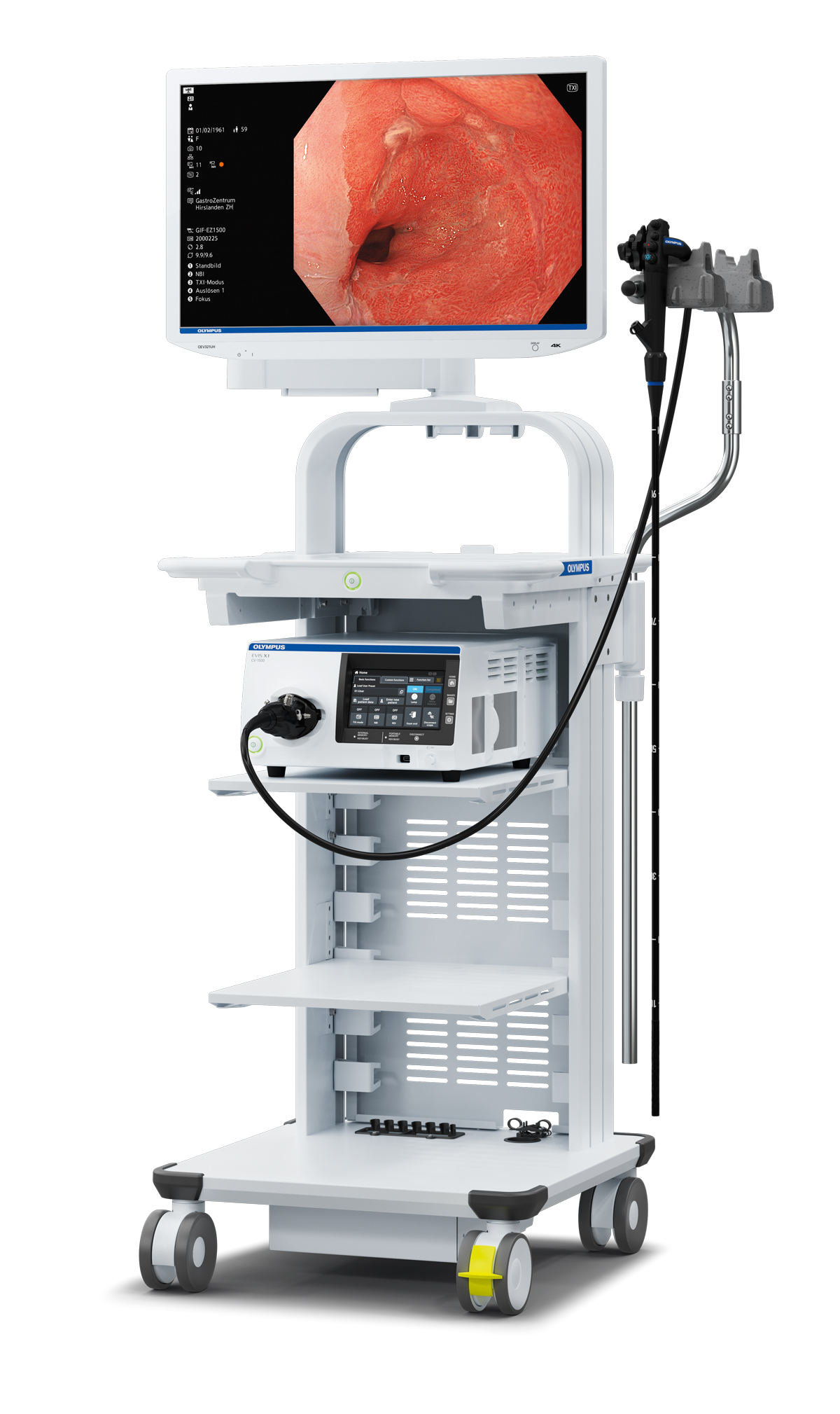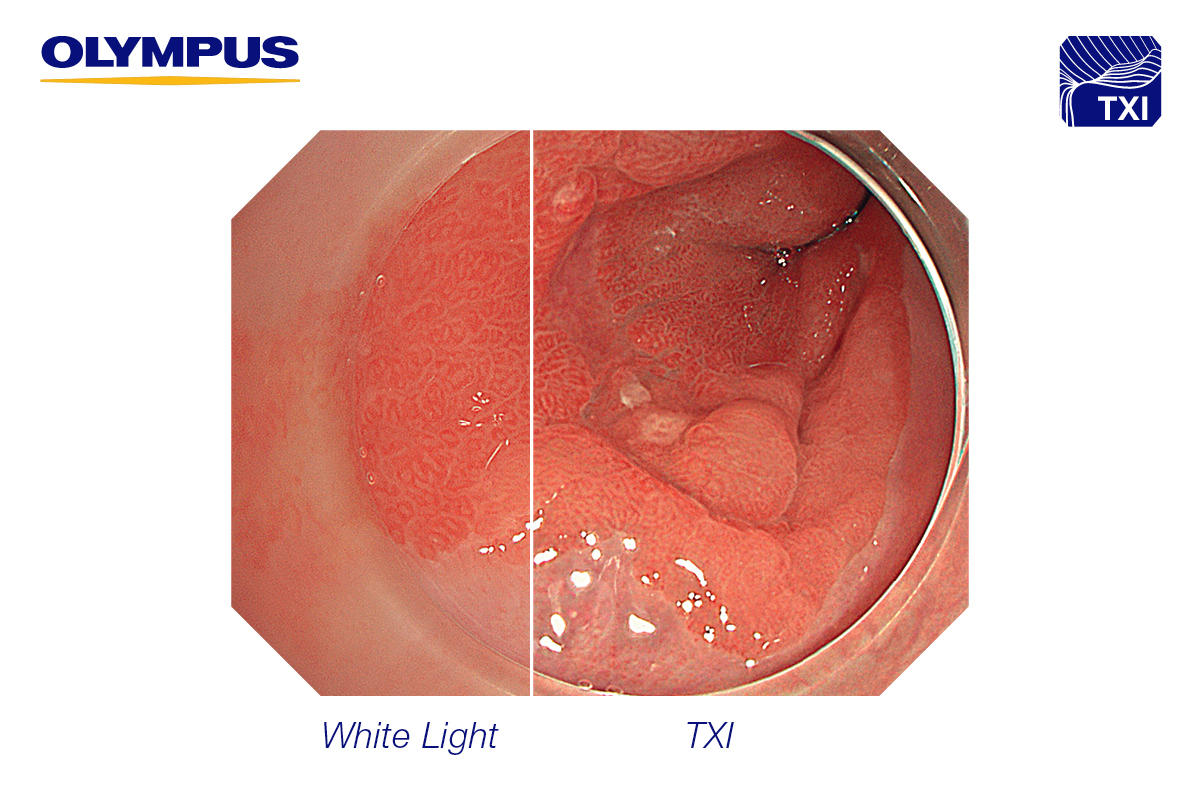Hamburg, 04/23/2020 | Press Release | Medical Systems Olympus launches EVIS X1, its most advanced endoscopy system to date
Olympus Corporation (President: Yasuo Takeuchi) today announced the launch of EVIS X1, its most advanced endoscopy system to date. The new system is to improve outcomes from disorders of the stomach, colon, and oesophagus, as well as from bronchial diseases, by providing every endoscopist with innovative and proven tools. The launch of EVIS X1 further strengthens Olympus’ leadership in endoscopy and continued medical focus.
EVIS X1 supports accurate screening and confident diagnosis through introducing new and easy-to-use technologies to support how gastrointestinal disorders, such as colorectal cancer (CRC), or bronchial diseases are detected, characterized and treated. These include Extended Depth of Field (EDOF), Red Dichromatic Imaging (RDI), Texture and Color Enhancement Imaging (TXI) as well as the already known and proven Narrow Band Imaging (NBI). Being committed to innovation, Olympus is also already developing future technologies – in particular featuring artificial intelligence (AI).
“EVIS X1 is the latest innovation to build on our 100-year legacy of world-leading innovation and quality,” said Frank Drewalowski, Head of Endoscopic Solutions Division, Olympus Corporation. “We are proud that, with EVIS X1, we can support endoscopists around the world and help to elevate the standard of endoscopy across the board.”
Combining knowledge, experience and innovation in one endoscopic system
The key features of the EVIS X1 system include:
- Extended Depth of Field (EDOF): EDOF combines two images at different focus distances into one perfect image to help diagnosis and confident decision-making. It delivers observational excellence through continuous broad focus and seamless magnification. At the same time, the established Dual Focus function provides high magnification, which can be activated by the push of a button. This improved visibility and continuously sharp image has been developed to reduce the necessity for focal adjustments and could improve efficiency and decrease the oversight rate.
- Red Dichromatic Imaging (RDI): Gastrointestinal bleeding is a serious challenge, potentially involving considerable mortality and management costs. RDI enhances the visibility of deep blood vessels and GI bleeding sources, thereby helping to identify blood vessels that could require immediate treatment. It utilizes green, amber and red wavelengths to visualize deep blood vessels. Easier identification of bleeding spots makes hemostasis quicker and easier whilst potentially improving the efficiency of any corresponding treatment. This minimally invasive technology could also help reduce physician stress during endoscopic therapy.
- Texture and Color Enhancement Imaging (TXI): TXI supports better visibility of potential and extant lesions (such as areas of inflammation, flat or depressed lesions, or even tiny precursor lesions) through enhancing texture, brightness and color to define subtle tissue differences more clearly. With its advanced imaging technology, TXI holds the potential to reinvent white light in endoscopy. By supporting better visibility of potential and extant lesions, TXI aims to contribute to higher detection rates and improve qualitative diagnosis.
- Narrow Band Imaging (NBI): NBI is an already known, powerful and proven optical technology that allows for a high-confidence optical diagnosis through the creation of a strong contrast between vessels and surrounding mucosa. It utilizes specific blue and green wavelengths. NBI not only supports earlier detection of any lesions but also provides a more detailed, higher-contrasted visualization and thus improves qualitative diagnosis.
References
*WHO Cancer Factsheet. Available: https://www.who.int/news-room/fact-sheets/detail/cancer. Accessed February 2020.
**Global patterns and trends in colorectal cancer incidence and mortality. https://gut.bmj.com/content/66/4/683. Accessed February 2020.
***Corley DA, Jensen CD, Marks AR, et al. Adenoma Detection Rate and Risk of Colorectal Cancer and Death. N Engl J Med. 2014;370:1298–1306. Available at: https://www.ncbi.nlm.nih.gov/pmc/articles/PMC4036494/. Accessed February 2020.


